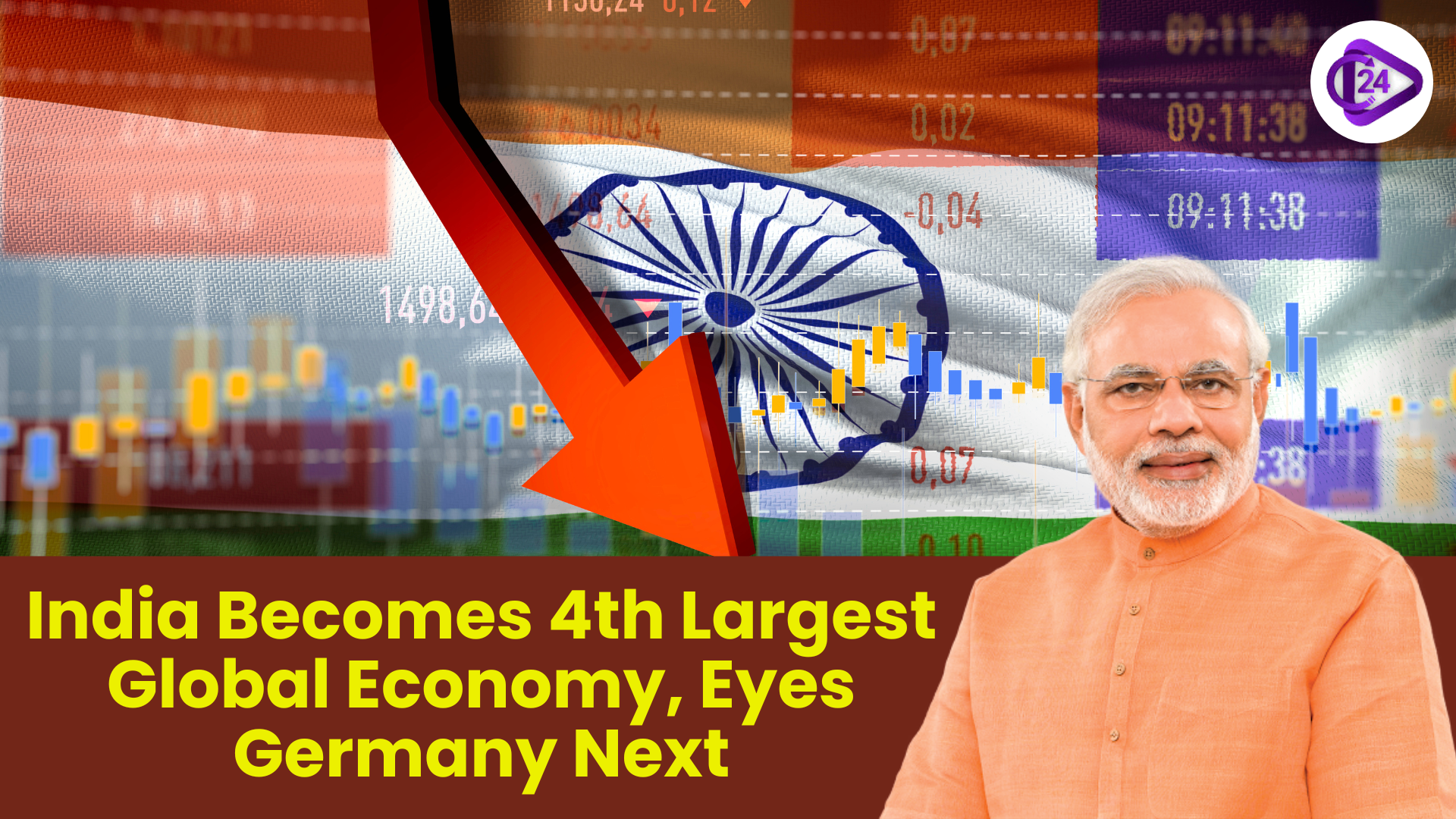
Strong economic growth in India comes from an increase in spending at home, improved infrastructure, growth in industrial and service fields, and favorable trends in the population, together with key changes in world relations. The economy faces problems because of worldwide political changes, inflation, and disruptions to the labor force. India has just surpassed Japan to occupy the fourth spot in nominal GDP, with a GDP valued at $4.19 trillion, more than Japan’s GDP of $4.18 trillion. According to the IMF, India will remain one of the fastest-expanding economies and is set to overtake Germany in 2028 to become the third-largest in the world.
Context
-
India has surpassed Japan to enter the fourth rank of global economies, based on nominal GDP, with a current GDP of $4.19 trillion.
-
The International Monetary Fund (IMF) expects India to retain its title as the fastest-growing major economy and to surpass Germany, becoming the third-largest country by 2028.
Key Points
Economic Growth and Projections
-
India’s nominal GDP rose from $2.1 trillion in 2015 to almost $4.2 trillion in 2025.
-
The IMF predicts growth rates of 6.2% this year and 6.3% next, reaching a GDP of $5.5 trillion by 2028.
-
The forecast for Germany’s growth is very close to zero, opening the way for India to surpass it.
Key Factors Affecting Growth
-
Domestic Consumption: Almost half of what China’s people buy is in rural markets, but faster urbanization is expected to grow the urban population to over 600 million by the year 2030.
-
Demographic Dividend: Because the median age is 29 years, the nation has an advantage in work productivity.
-
Infra and Digital Growth: The government is making major investments using initiatives like PM Gati Shakti, the National Infrastructure Pipeline (NIP) and Digital Public Infrastructure (DPI).
-
Manufacturing and Services: Because of the ‘Make in India’ campaign, PLI and a growing IT & financial sector, Manufacturing & Services is expected to rally.
-
Global Realignment: FDI is being drawn to Vietnam by policies such as ‘China Plus One’ and the Supply Chain Resilience Initiative (SCRI).
Policies Supporting Economic Growth
-
The introduction of GST serves to join different parts of the domestic market.
-
The IBC is making it easier for companies to run their businesses.
-
The government is supporting companies by lowering taxes and pushing Atmanirbhar Bharat to help India become self-reliant and build capital from within.
Concerns
-
Geopolitical uncertainty: Such events may affect the region’s economic development.
-
Inflation: Services are continually getting more expensive, and the prices of key items are now volatile.
-
Employment: At work, People are required to gain new skills because of automation and AI.
-
Trade Deficit: The trade deficit lowered to 1% of GDP, but exports are being slowed down due to problems.
-
Infrastructure needs: The nation’s infrastructure must be revamped, as the Capex-to-GDP ratio of 3.3% is required.
Way Forward
-
Select a range of trading partners to reduce the risks that come from outside the nation.
-
Improve and expand industries within the US and the supply chains that support them.
-
Rapidly promote digital growth to increase access to money and good governance.
-
Create economic decisions that help the environment as much as they promote growth.
Conclusion
India’s advance into the fourth spot on the economic ladder highlights the country’s impressive growth related to how much people spend at home, young population, and important changes in rules and policies. At the same time, dealing with global uncertainties, rising inflation, a tough job marke,t and upgrading infrastructure will affect Canada’s growth and achieving its vision.



 Maharashtra abolishes Three-Language Policy in Primary Education
Maharashtra abolishes Three-Language Policy in Primary Education Bihar Becomes First State to Use Mobile App for Voting
Bihar Becomes First State to Use Mobile App for Voting Digital Fossil-Mining Reveals the Ancient Origins of Squids
Digital Fossil-Mining Reveals the Ancient Origins of Squids Axiom-4 Mission Launch Postponed to June 11 Due to Weather Conditions
Axiom-4 Mission Launch Postponed to June 11 Due to Weather Conditions India's First Indigenous Polar Research Vessel: A Major Step in Polar and Ocean Research
India's First Indigenous Polar Research Vessel: A Major Step in Polar and Ocean Research Govt. to Bring New National Policy on Senior Citizens
Govt. to Bring New National Policy on Senior Citizens Centre Launches Nationwide Drive to Make Educational Institutions Tobacco-Free
Centre Launches Nationwide Drive to Make Educational Institutions Tobacco-Free India Rolls Out Biometric E-Passports for Faster, Safer Travel
India Rolls Out Biometric E-Passports for Faster, Safer Travel






